Intro
Monitor your fertility with basal body temperature tracking, a natural family planning method using temperature charts and thermometers to detect ovulation and menstrual cycles, aiding conception and reproductive health.
Taking your basal body temperature is a simple yet effective way to track your fertility and overall health. By monitoring your temperature, you can gain valuable insights into your body's natural rhythms and patterns. This information can be particularly useful for women trying to conceive, as it can help identify the most fertile days of the month. In this article, we will delve into the world of basal body temperature, exploring its benefits, how to take your temperature, and what the results can reveal about your body.
Basal body temperature refers to the temperature of your body at rest, typically taken in the morning before getting out of bed. This temperature is usually lower than your normal body temperature, which is around 98.6°F (37°C). By tracking your basal body temperature, you can identify subtle changes that occur throughout your menstrual cycle. These changes can indicate when you are ovulating, which is essential for conception. Moreover, monitoring your basal body temperature can also help you detect any underlying health issues, such as thyroid problems or hormonal imbalances.
The importance of tracking basal body temperature cannot be overstated. Not only can it help you conceive, but it can also provide valuable information about your overall health. By understanding your body's natural rhythms, you can make informed decisions about your reproductive health and take proactive steps to maintain your well-being. Whether you are trying to get pregnant or simply want to better understand your body, tracking your basal body temperature is a simple and effective way to take control of your health.
Benefits of Tracking Basal Body Temperature
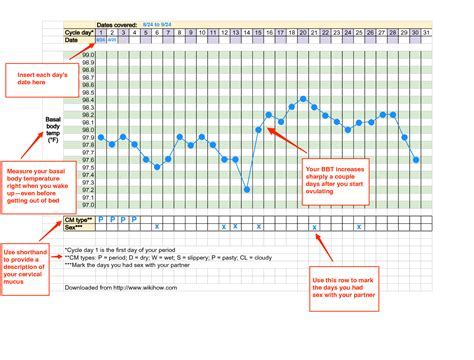
Tracking your basal body temperature offers numerous benefits, particularly for women trying to conceive. Some of the advantages of monitoring your temperature include:
- Identifying ovulation: By tracking your basal body temperature, you can pinpoint when you are ovulating, which is essential for conception.
- Detecting fertility issues: Abnormal temperature patterns can indicate underlying fertility issues, such as polycystic ovary syndrome (PCOS) or thyroid problems.
- Monitoring menstrual health: Basal body temperature can provide insights into your menstrual cycle, helping you identify any irregularities or abnormalities.
- Improving overall health: By understanding your body's natural rhythms, you can make informed decisions about your reproductive health and take proactive steps to maintain your well-being.
How to Take Your Basal Body Temperature
Taking your basal body temperature is a straightforward process that requires minimal equipment. To get started, you will need a basal body thermometer, which is a specialized thermometer designed specifically for tracking temperature at rest. Here are the steps to follow: 1. Purchase a basal body thermometer: You can find basal body thermometers at most pharmacies or online retailers. 2. Take your temperature at the same time every day: Ideally, you should take your temperature as soon as you wake up, before getting out of bed. 3. Use the thermometer correctly: Follow the manufacturer's instructions for using the thermometer, and make sure to take your temperature in the same location each day (e.g., orally, rectally, or vaginally). 4. Record your temperature: Keep a temperature chart or use a fertility app to record your temperature each day.Understanding Basal Body Temperature Results
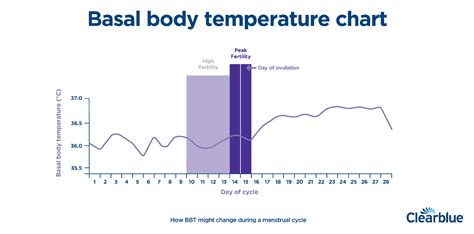
Once you start tracking your basal body temperature, you will begin to notice patterns and changes throughout your menstrual cycle. Here are some key things to look for:
- Pre-ovulatory phase: During this phase, your temperature will typically be lower, ranging from 97.2°F to 97.7°F (36.2°C to 36.5°C).
- Ovulatory phase: When you ovulate, your temperature will usually increase by 0.4°F to 1°F (0.2°C to 0.5°C), indicating that your body is preparing for potential fertilization.
- Post-ovulatory phase: After ovulation, your temperature will typically remain higher, ranging from 97.7°F to 98.3°F (36.5°C to 36.8°C).
Common Basal Body Temperature Patterns
While every woman's temperature pattern is unique, there are some common patterns to look out for: * Monophasic pattern: This pattern is characterized by a single temperature shift, typically occurring after ovulation. * Biphasic pattern: This pattern involves two distinct temperature shifts, one before ovulation and another after. * Triphasic pattern: This pattern involves three temperature shifts, which can indicate a more complex menstrual cycle.Factors That Can Affect Basal Body Temperature
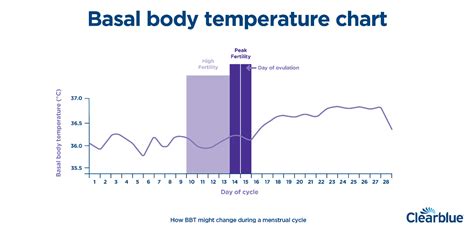
Several factors can influence your basal body temperature, including:
- Sleep quality: Poor sleep quality or irregular sleep patterns can affect your temperature.
- Medications: Certain medications, such as birth control pills or thyroid medication, can impact your temperature.
- Hormonal changes: Fluctuations in hormone levels, such as those experienced during menopause or pregnancy, can affect your temperature.
- Environmental factors: Exposure to extreme temperatures, travel, or changes in altitude can influence your temperature.
Tips for Accurate Basal Body Temperature Readings
To ensure accurate temperature readings, follow these tips: * Take your temperature at the same time every day. * Use a consistent thermometer and location. * Avoid consuming alcohol or caffeine before taking your temperature. * Get plenty of sleep and maintain a regular sleep schedule.Basal Body Temperature and Fertility
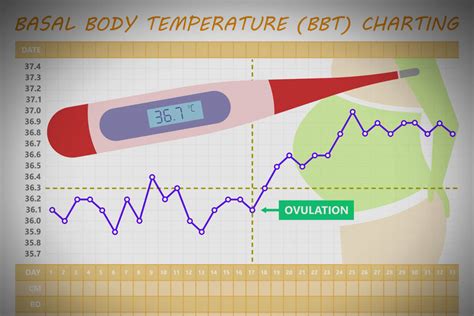
Tracking your basal body temperature can be a valuable tool for women trying to conceive. By identifying your most fertile days, you can increase your chances of getting pregnant. Here are some ways basal body temperature can impact fertility:
- Identifying ovulation: By tracking your temperature, you can pinpoint when you are ovulating, which is essential for conception.
- Timing intercourse: By knowing when you are ovulating, you can time intercourse to coincide with your most fertile days.
- Detecting fertility issues: Abnormal temperature patterns can indicate underlying fertility issues, such as polycystic ovary syndrome (PCOS) or thyroid problems.
Common Fertility Issues Detected by Basal Body Temperature
Some common fertility issues that can be detected by tracking basal body temperature include: * Irregular ovulation: Abnormal temperature patterns can indicate irregular ovulation, which can make it difficult to conceive. * Anovulation: If your temperature remains low throughout your cycle, it may indicate that you are not ovulating. * Luteal phase defect: A short luteal phase or low temperatures during the luteal phase can indicate a luteal phase defect, which can affect implantation.Basal Body Temperature and Menstrual Health
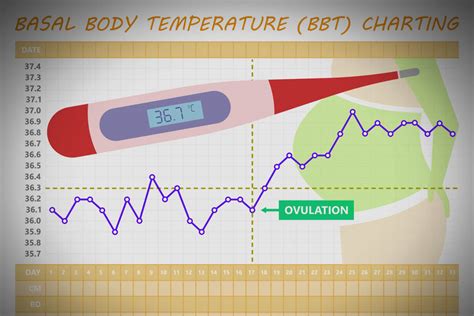
Tracking your basal body temperature can also provide insights into your menstrual health. By monitoring your temperature, you can:
- Identify irregularities: Abnormal temperature patterns can indicate irregularities in your menstrual cycle, such as irregular periods or heavy bleeding.
- Detect hormonal imbalances: Changes in your temperature can indicate hormonal imbalances, such as thyroid problems or polycystic ovary syndrome (PCOS).
- Monitor menstrual cycle length: By tracking your temperature, you can monitor the length of your menstrual cycle and identify any changes or irregularities.
Common Menstrual Health Issues Detected by Basal Body Temperature
Some common menstrual health issues that can be detected by tracking basal body temperature include: * Menstrual irregularities: Abnormal temperature patterns can indicate irregular periods, heavy bleeding, or other menstrual irregularities. * Hormonal imbalances: Changes in your temperature can indicate hormonal imbalances, such as thyroid problems or polycystic ovary syndrome (PCOS). * Endometriosis: Abnormal temperature patterns can indicate endometriosis, a condition in which tissue grows outside the uterus.Conclusion and Next Steps

In conclusion, tracking your basal body temperature is a simple yet effective way to gain insights into your fertility and overall health. By understanding your body's natural rhythms, you can make informed decisions about your reproductive health and take proactive steps to maintain your well-being. Whether you are trying to conceive or simply want to better understand your body, tracking your basal body temperature is a valuable tool that can provide valuable information and help you achieve your health goals.
We invite you to share your experiences with tracking basal body temperature in the comments below. Have you used basal body temperature to conceive or monitor your menstrual health? What benefits or challenges have you encountered? By sharing your story, you can help others who are navigating their own fertility journeys.
What is basal body temperature?
+Basal body temperature refers to the temperature of your body at rest, typically taken in the morning before getting out of bed.
How do I take my basal body temperature?
+To take your basal body temperature, use a basal body thermometer and follow the manufacturer's instructions. Take your temperature at the same time every day, ideally as soon as you wake up.
What can basal body temperature indicate about my fertility?
+Basal body temperature can indicate when you are ovulating, which is essential for conception. Abnormal temperature patterns can also indicate underlying fertility issues, such as polycystic ovary syndrome (PCOS) or thyroid problems.
Can basal body temperature be used to detect menstrual health issues?
+Yes, basal body temperature can be used to detect menstrual health issues, such as irregular periods, heavy bleeding, or hormonal imbalances.
How accurate is basal body temperature for tracking fertility?
+Basal body temperature can be a reliable method for tracking fertility, but it is not 100% accurate. Factors such as sleep quality, medications, and environmental factors can affect temperature readings.
